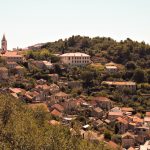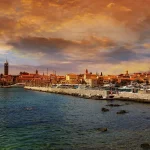For decades we’ve all been hearing about the drastic reduction of the population on Croatia’s Dalmatian islands. Now it seems that the trend might finally be reversing!
Although most islands still have a negative population trend because of the reduced number of births and people leaving them to go and live elsewhere, there are examples of the exact opposite happening. Damir Šarac writes for Slobodna Dalmacija not just based on stories and anecdotes, but referring to the real numbers issued by the Croatian Bureau of Statistics.
In the category which follows migration state-wide, in the period between 2013 and 2018, data shows that some of the Dalmatian islands are the undisputed champions. Among the municipalities with over a thousand inhabitants, the biggest growth has been seen in Šolta (23 percent), Sali on Dugi otok (16 percent) and Vir (14 percent). When it comes to towns with population growth, Novalja on Pag is the first (almost 10 percent growth), and Vis is second (6 percent).
While other islands congratulate them on their successes, mayors and municipality heads highlight that these are the results of years of policies aimed at increasing the number of inhabitants and making it easier for people to find work on Dalmatian islands. The sad side of the story is that so many people have already left the islands, and such a small number of people are still living on them, that it takes a very small number of births or arrivals to make that type of difference we’ve seen in the last paragraph.
The first example is Šolta, which can be seen as a Split suburb as it’s close to Split and is well connected through ferry and catamaran lines (eight during the summer, six during the winter).
These measures allow people to live on Šolta and work in Split. The municipality, headed by Nikola Cecić Karuzić (in his third term, as an independent candidate) gives support for each newborn, they’ve opened a kindergarten and the number of children in their school is growing each year. There are a total of 92 foreigners living there, mostly from European countries, who have recognised Šolta as an island that makes for a nice life.
Šolta has no surtax, some other taxes are also at zero, and, interestingly enough: there are no unemployed people on Šolta! They need workers constantly, anybody who needs a job can find one on Šolta – and that leads to them having over 400 inhabitants more in 2018 than they did in 2011.
The Mayor of Vis, Ivo Radica of HDZ, is a bit sceptical about the numbers, saying that some of the people just register on the island in order to use the benefits from that, while they’re actually living elsewhere, but he does think that some improvements have been made.
He says that the only way to increase the population is to give people a place to stay and work and that everything else is demagogy. Apartments are being built on the island, and families with children get sizeable benefits on Vis. However, he highlights that it’s necessary to have people move to the island as well, and adds that four families have moved to Vis this year, one of them from Dubai. Some major projects (tourist and infrastructure) are planned on Vis, which means that more workers will be needed.
The Sali Municipality is known as the municipality in Croatia that gives out the biggest financial support for each newborn child – a massive 60 thousand kuna! That has certainly helped, as the schools are seeing the increased number of students (for instance, a school in Sali has 14 pupils in the first grade, and there were only 5 last year). The biggest problem for Dugi otok is that they’re not connected to the water supply system from the mainland, and the water that can be obtained on the island isn’t enough for the tourist season. However, new investments and projects are announced which might solve that problem.










